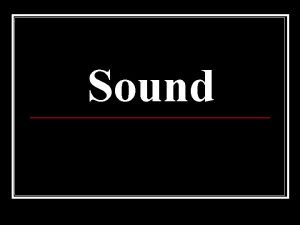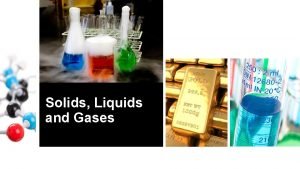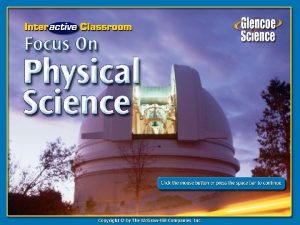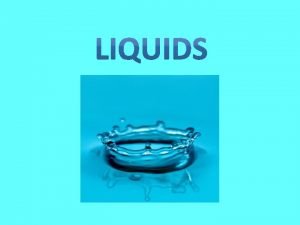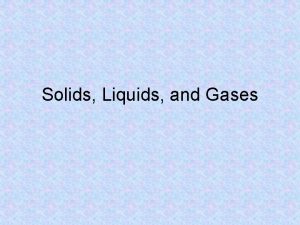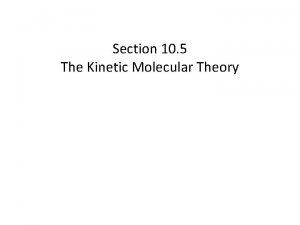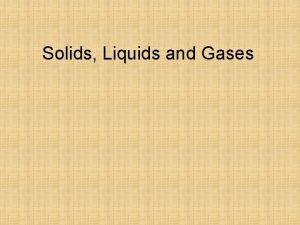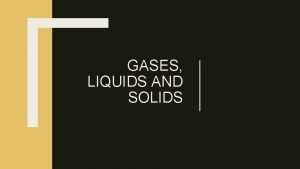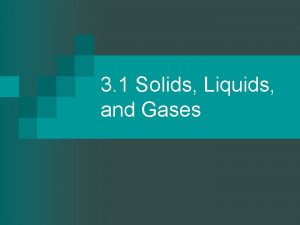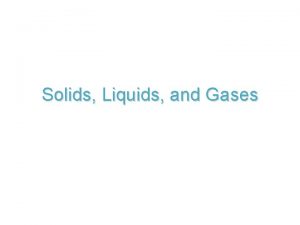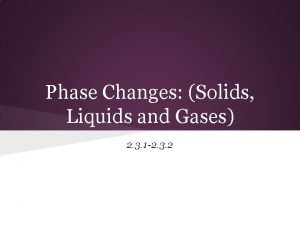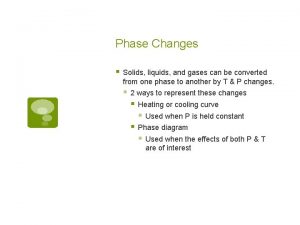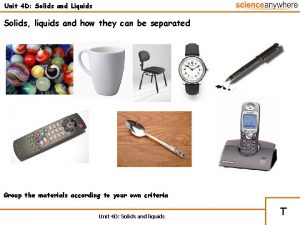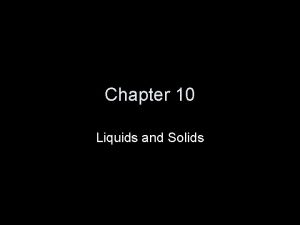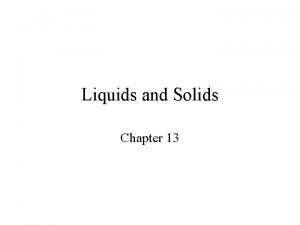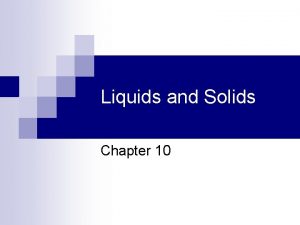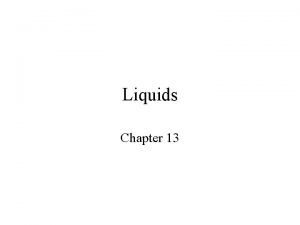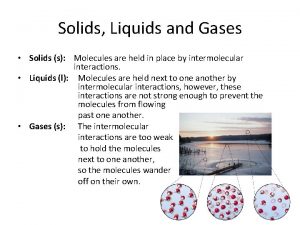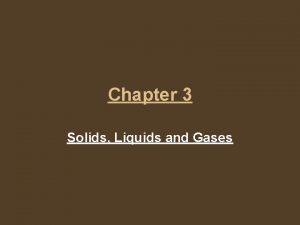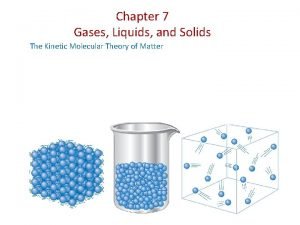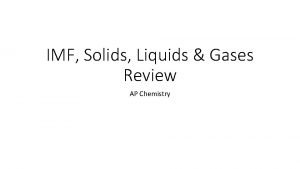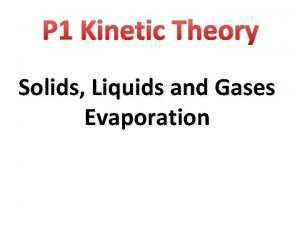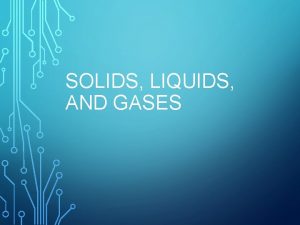Ch 13 Gases Liquids Solids Phase Changes Kinetic






















- Slides: 22

Ch. 13 – Gases, Liquids Solids & Phase Changes

Kinetic Molecular Theory u Particles • • • in an ideal gas… have no volume. have elastic collisions. are in constant, random, straight-line motion. don’t attract or repel each other. have an avg. KE directly related to Kelvin temperature.

Real Gases u Particles in a REAL gas… • have their own volume • attract each other u Gas behavior is most ideal… • at low pressures • at high temperatures • in nonpolar atoms/molecules

Characteristics of Gases u Gases expand to fill any container. • random motion, no attraction u Gases are fluids (like liquids). • no attraction u Gases have very low densities. • no volume = lots of empty space

Characteristics of Gases u Gases can be compressed. • no volume = lots of empty space u Gases undergo diffusion • random motion

Temperature u Always use absolute temperature (Kelvin) when working with gases (prevents negative numbers). ºF -459 ºC -273 K 0 32 212 0 100 273 373 K = ºC + 273

Pressure Which shoes create the most pressure?

Pressure u Barometer • measures atmospheric pressure Mercury Barometer

Pressure u Manometer • measures contained gas pressure U-tube Manometer

Pressure u KEY UNITS AT SEA LEVEL 101. 325 k. Pa (kilopascal) 1 atm 760 mm Hg 760 torr 14. 7 psi

STP Standard Temperature & Pressure 0°C 1 atm -OR- 273 K 101. 325 k. Pa

Phase Changes

Phase Changes u Evaporation • molecules at the surface gain enough energy to overcome IMF u Volatility • measure of evaporation rate • depends on temp & IMF

Phase Changes u Equilibrium • trapped molecules reach a balance between evaporation & condensation

Heating Curves u Temperature Change • change in KE (molecular motion) • depends on heat capacity u Heat Capacity • energy required to raise the temp of 1 gram of a substance by 1°C

Heating Curves u Phase Change • change in PE (molecular arrangement) • temp remains constant u All six phase changes can occur at the triple point: freezing and melting, evaporation and condensation, sublimation and deposition. C. Johannesson

Phase Diagrams • The triple point is the point on a phase diagram that represents the temperature and pressure at which three phases of a substance can coexist.

Liquids vs. Solids IMF Strength Fluid Density Compressible Diffusion LIQUIDS SOLIDS Stronger than in gases Very strong Y N high N N slower than in gases extremely slow

Liquid Properties u Surface Tension • attractive force between particles in a liquid that minimizes surface area

Liquid Properties u Capillary Action • attractive force between the surface of a liquid and the surface of a solid water mercury

Types of Solids u Crystalline • • - repeating geometric pattern covalent network metallic decreasing ionic m. p. covalent molecular u Amorphous - no geometric pattern

Types of Solids Ionic (Na. Cl) Metallic
 Kinetic molecular theory of solid
Kinetic molecular theory of solid Buoyancyability
Buoyancyability Motion of particles in solids, liquids and gases
Motion of particles in solids, liquids and gases Solid liquid gas examples
Solid liquid gas examples Particle movement in solids liquids and gases
Particle movement in solids liquids and gases Venn diagram of conduction, convection and radiation
Venn diagram of conduction, convection and radiation Lesson outline lesson 1 solids liquids and gases answer key
Lesson outline lesson 1 solids liquids and gases answer key How does sound travel through solids liquids and gases
How does sound travel through solids liquids and gases Solid
Solid Chapter 14 solids liquids and gases worksheet answers
Chapter 14 solids liquids and gases worksheet answers Thermal expansion and contraction examples
Thermal expansion and contraction examples Liquid information
Liquid information Gas from becomes easier to compress
Gas from becomes easier to compress Kinetic molecular theory of liquids and solids
Kinetic molecular theory of liquids and solids Liquids and solids
Liquids and solids Chapter 11 - states of matter: liquids and solids
Chapter 11 - states of matter: liquids and solids Constant rate filtration example
Constant rate filtration example Solid to gas
Solid to gas Liquids and solids menu
Liquids and solids menu Molecular theory of gases and liquids
Molecular theory of gases and liquids Kinetic molecular theory of liquids
Kinetic molecular theory of liquids The attraction between particles gives solids a definite
The attraction between particles gives solids a definite Postulates of kinetic theory of gases
Postulates of kinetic theory of gases







